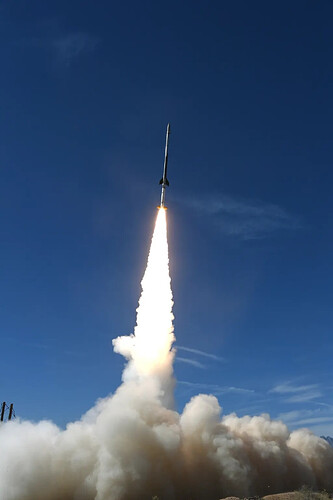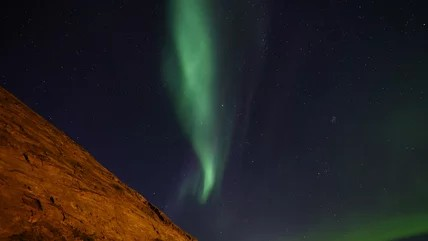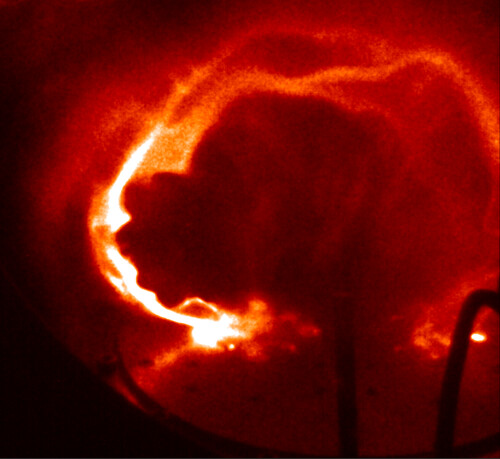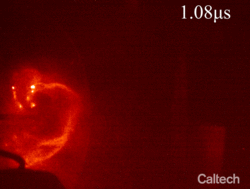He did ask for a "source" though ![]()
Have to wait till internet isn't scattred
?
I'm mesmerized by this discussion but also a little bit worried..
And you still haven't answered this @Gareth
Did you mean corona virus - solar corona? same word - must mean something?
It’s a bit of a mystery
The Corona is the hottest part of the sun which becomes visible during an eclipse.
From images carved into ancient stones in places like COUNTY MEATH, Ireland, it seems that people recorded the appearance of the solar corona at least 5000 years ago. But how do we know anything about the corona given that eclipses occur so rarely – barely a few minutes per year – and then only at specific geographic locations?
Ok, but you still didn't answer my question.
I don't see anything strange or mysterious by someone seeing an eclipe and making a drawing/carving out of it.
I believe the eclipses are signifiant but unsure how
Hope you had a good evening
Here's some information for you...
UPDATE: The three rockets comprising the APEP mission launched on Saturday, Oct. 14th at 10:00am, 10:35am, and 11:10am MT from White Sands Missile Range, and reached altitudes of 216 miles, 219 miles, and 218 miles (348 kilometers, 353 kilometers, and 352 kilometers), respectively. The PI reports good data from each rocket and all three payloads were successfully recovered to be reflown into the Total Solar Eclipse from Wallops Flight Facility on April 8, 2024.
The third rocket from the APEP mission leaves the launch pad
A NASA sounding rocket mission will launch three rockets during the 2023 annular eclipse in October to study how the sudden drop in sunlight affects our upper atmosphere.
Interesting reading here
Three identical payloads will be launched during the Total Eclipse occuring April 8, 2024. The first payload will launch approximately 45-minutes before peak local eclipse, the second at peak local eclipse, and the third approximately 45-minutes past peak local eclipse.
Three similar payloads, APEP-1, were launched from White Sands Missile Range, NM on October 14, 2023 during the Annular Eclipse. These flights facilitate simultaneous multipoint spatio-temporal in-situ observations of electrodynamics and neutral
dynamics associated with solar eclipses
Here’s What Else Happens Eclipse Day: ‘Devil Comet,’ Rocket Launches And Dark Matter
FORBES[INNOVATION](https://www.forbes.com/innovat(https://www.forbes.com/news)
The United States’ first total solar eclipse in seven years will occur Monday, but other space-related events will also take place that day, including rocket launches, the potential to witness the “devil comet” and a dark matter experiment.
DETONATING A NUCLEAR WEAPON IN SPACE IS A TERRIBLE IDEA. HERE'S WHY
Read More: Detonating A Nuclear Weapon In Space Is A Terrible Idea. Here's Why
SCIENCE SPACE
DETONATING A NUCLEAR WEAPON IN SPACE IS A TERRIBLE IDEA. HERE'S WHY
Dima Zel/Shutterstock
BY MICHAEL DAWSON/UPDATED: DEC. 6, 2022 5:18 PM EST
Nuclear weapons are probably one of the most terrifying things ever made by humanity. Most people will be quite familiar with their unspeakable death and destruction, and for good reason. From 1945 to 1996, there were well over 2,000 nuclear bombs tested across many countries, according to the United Nations. To this day nuclear testing continues in several countries, like North Korea. Perhaps there might be a time in the future when nuclear disarmament is possible, and the danger associated with nuclear weapons is eliminated.
To date, nuclear bombs have been used twice in wartime: Hiroshima and Nagasaki (via History). And the largest bomb ever detonated in history was Tsar Bomba. It eclipsed both Fat Man and Little Man, the bombs dropped on Japan during WWII, in blast radius and size, according to Britannica.
With that being said, there are questions about nuclear bombs and their nature, particularly in hypothetical scenarios. For example: Nuclear bombs have been detonated underwater, so what would happen if one were detonated in space?
Read More: Detonating A Nuclear Weapon In Space Is A Terrible Idea. Here's Why
Nuclear weapons are the most terrifying invention on planet Earth, but how do they work? Firstly, there's a bit of history to know behind the bomb.
As explained by History, in 1938 Berlin, Germany, scientists discovered something that would forever change the world of physics, World War II, and history as people knew it: Nuclear fission. Nuclear fission is the process that atoms undergo when splitt... Themselves
Nuclear fission sounds like a complicated process, but it's actually straightforward. Atoms undergo fission when neutrons slam into them, causing them to split in two. As told by the Office of Nuclear Energy, an enormous amount of energy is released when this happens, which serves as the basis for nuclear bombs. On the opposite end of things, nuclear fusion is what happens when atoms come together, instead of splitting apart. This creates an atom heavier than the two and is behind the sun's energy. Both fission and fusion are processes important for nuclear detonation, but in different ways.
So, a nuclear warhead usually contains isotopes like uranium-235 and plutonium-239, though this can sometimes vary, depending on the bomb. However, nuclear fission and nuclear fusion are the signature processes nukes undergo to produce massive amounts of energy all at once. According to How Stuff Works, when a nuclear bomb is detonated, it rapidly undergoes these processes to create an immense amount of blast energy, heat, and radiation.
...Another thing about space is its breathability — or rather its lack thereof. Space is almost entirely devoid of oxygen. As Science says, this is because oxygen atoms have a tendency to stay attached to stardust, so they can't join together to form molecules. This is important in regard to detonating nukes in space because it completely changes how their explosions would behave.
Nuclear bombs on Earth are able to generate blast waves and mushroom clouds because of the presence of oxygen. Fire and explosions need oxygen to burn, which is why nukes send out massive blasts and shockwaves miles across a region. But in space, there is no oxygen to generate this. Earth's atmosphere is made up of various gases like oxygen, carbon dioxide, nitrogen, and so on, which help keep living things alive (via National Geographic).
A nuke detonating in space has the effect of creating an Aurora Borealis light show. The Northern Lights phenomenon, as explained by the Canadian Space Agency, happens primarily in the Northern Hemisphere, and is when the sky is lit up with a myriad of vivid colors. Similarly, Southern Lights also occur in the Southern Hemisphere of the planet. Collisions between charged particle ions and gases in the atmosphere cause Aurora Borealis.
So why is this relevant to nuclear bombs? Because the same lighting effect would also happen in a nuclear explosion in space. As Science ABC says, the nuclear blast would produce a lot of charged particles, which would have a dramatic effect on the Earth's atmosphere. The lights would be seen across the world and might even last a couple of days. This of course comes with the atmosphere basically becoming immensely radiated, but at least there'd be a pretty sky for a while
Such byproducts of a nuclear explosion could also be dangerous. The magnetic field created by a nuclear explosion could disrupt Earth's electronic communications, and debris would funnel into the upper layers of the Earth's atmosphere (per Science ABC). According to BBC's Science Focus, these byproducts are the primary dangers of nuclear bomb explosions in space — as opposed to on Earth, where the blast itself is the threat.
Read More: Detonating A Nuclear Weapon In Space Is A Terrible Idea. Here's Why
THE U.S. ONCE DETONATED A NUKE IN SPACE
Detonating nukes in space may seem like a nonsensical, hypothetical idea with no basis in reality, but that's far from the truth. It turns out that the United States actually did just that: detonated a nuke in space, just to see what would happen. ![]()
![]()
(Yes only once though), ![]()
It all started on July 8, 1962. Starfish Prime, the name of a fusion bomb, was launched into space by the U.S. military from Johnston Atoll, where it was visible even 1,000 miles away on Midway Atoll. According to National Geographic, the bomb was about 500 times more powerful than the nuke dropped on Hiroshima. As described by officials at the time, the bomb apparently made the entire night sky burn with red light. The blast was so powerful, that it actually created an Aurora Borealis in the sky, and even people in New Zealand could have seen it that night.
Stakes were high...
Read More: Detonating A Nuclear Weapon In Space Is A Terrible Idea. Here's Why
NASA's APEP Mission to Fire Rockets at the Eclipse
Forbes
Why NASA Will Fire Three Rockets At The Solar Eclipse
](Redirect Notice)
Mar 26, 2024 — APEP is named after the serpent deity from ancient Egyptian mythology, nemesis of the sun deity Ra, according to NASA. NASA's suborbital rockets ...
Continue the war on the Sun with Solar Attack, streaming now
This photo shows the three APEP sounding rockets and the support team after successful assembly. The team lead, Aroh Barjatya, is at the top center, standing next to the guardrails on the second floor. Photo: NASA/Berit Bland
Why Is NASA Shooting Missiles at the Solar Eclipse on April 8?
The ionosphere is highly impacted by solar radiation and charged particles on the dayside of the planet. On the nightside, charged particles can relax back into the background before getting charged up again when the Sun rises. This creates a sort of regular cycle in the ionosphere with a normal ebb and flow. Scientists are hoping to learn what happens to that cycle when only a portion of the ionosphere experiences a rapid but temporary decrease in solar interaction.
Interactions in the ionosphere are of interest because they impact communications technologies. “It’s an electrified region that reflects and refracts radio signals, and also impacts satellite communications as the signals pass through. Understanding the ionosphere and developing models to help us predict disturbances is crucial to making sure our increasingly communication-dependent world operates smoothly,” said mission lead Aroh Barjatya, in a statement.
Named for a Serpent Deity, NASA's Apep Mission Is Set to Fire Rockets at the Eclipse
Anytime you have a chance to shoot a rocket at a shadow for science, you should take it!
By Cassidy Ward Apr 4, 2024, 4:48
...
It isn’t quite as wacky as it might sound and there are some interesting scientific reasons for shooting missiles at an eclipse. The mission is known as APEP (short for Atmospheric Perturbations Around the Eclipse Path), named for the Egyptian serpent deity and nemesis of the Sun god, Ra. An alternative name for the same deity, Apophis, is given to a near-Earth asteroid and the subject of NASA’s ongoing OSIRIS-APEX mission.
If you believe these articles mean that they've sent nuclear bombs into the sun (151.37 million km away) then you have misunderstood what you've read.
@cybe
Bonus round
NASA will launch three sounding rockets during the total solar eclipse on April 8, 2024, to study how Earth’s upper atmosphere is affected when sunlight momentarily dims over a portion of the planet.
... It all started on July 8, 1962. Starfish Prime, the name of a fusion bomb, was launched into space by the U.S. military from Johnston Atoll, where it was visible even 1,000 miles away on Midway Atoll. According to National Geographic, the bomb was about 500 times more powerful than the nuke dropped on Hiroshima. As described by officials at the time, the bomb apparently made the entire night sky burn with red light. The blast was so powerful, that it actually created an Aurora Borealis in the sky, and even people in New Zealand could have seen it that night.
Stakes were high at the time, as the U.S. was competing with the Soviet Union in a nuclear arms race. As a demonstration of power, the U.S. conducted many nuclear tests to prove its nuclear readiness. As said by Smithsonian Magazine, there was very limited knowledge about how radiation worked in space at the time, so the tests also proved useful for science. With that being said, hopefully people will never detonate another nuke in space ever again.
As they have been doing and did with this last eclipse in April don't know what
Happened to that article cube...
Detonating nukes in space may seem like a nonsensical, hypothetical idea with no basis in reality, but that's far from the truth. It turns out that the United States actually did just that: detonated a nuke in space, just to see what would happen
Such byproducts of a nuclear explosion could also be dangerous. The magnetic field created by a nuclear explosion could disrupt Earth's electronic communications, and debris would funnel into the upper layers of the Earth's atmosphere (per Science ABC). According to BBC's Science Focus, these byproducts are the primary dangers of nuclear bomb explosions in space — as opposed to on Earth, where the blast itself is the threat.
Nuclear bombs on Earth are able to generate blast waves and mushroom clouds because of the presence of oxygen. Fire and explosions need oxygen to burn, which is why nukes send out massive blasts and shockwaves miles across a region. But in space, there is no oxygen to generate this. Earth's atmosphere is made up of various gases like oxygen, carbon dioxide, nitrogen, and so on, which help keep living things alive (via National Geographic).
As explained by ScienceABC, a nuke detonated in space wouldn't make a mushroom cloud, but more so a spherical explosion. There would still be an intense release of heat and radiation, but the actual blast wave would not follow as it would on Earth.
... Nuclear fission sounds like a complicated process, but it's actually straightforward. Atoms undergo fission when neutrons slam into them, causing them to split in two. As told by the Office of Nuclear Energy, an enormous amount of energy is released when this happens, which serves as the basis for nuclear bombs. On the opposite end of things, nuclear fusion is what happens when atoms come together, instead of splitting apart. This creates an atom heavier than the two and is behind the sun's energy. Both fission and fusion are processes important for nuclear detonation, but in different ways.
So, a nuclear warhead usually contains isotopes like uranium-235 and plutonium-239, though this can sometimes vary, depending on the bomb. However, nuclear fission and nuclear fusion are the signature processes nukes undergo to produce massive amounts of energy all at once. According to How Stuff Works, when a nuclear bomb is detonated, it rapidly undergoes these processes to create an immense amount of blast energy, heat, and radiation.
For More on Eclipses:
Conspiracies Orbit April 8 Total Solar Eclipse; Why You Shouldn't Worry
Everything to Know About April's Solar Eclipse, Including Where to Get Free Eclipse Glasses
Doomed Lunar Lander Captured a View of Earth That’s to Die For
Sounding rockets are nuclear weapons also used by the military
Exclusive: Russia attempting to develop nuclear space weapon to destroy satellites with massive energy wave, sources familiar with intel say
CNN —
Russia is trying to develop a nuclear space weapon that would destroy satellites by creating a massive energy wave when detonated, potentially crippling a vast swath of the commercial and government satellites that the world below depends on to talk on cell phones, pay bills, and surf the internet, according to three sources familiar with US intelligence about the weapon.
The next global crisis could come from the sun. We should prepare now.
(**Throw a bomb or 2 into the sun and **
Presto no more climate change)
https://www.washingtonpost.com/opinions/interactive/2024/solar-storm-threat-electric-grid/
Diversification from Russian nuclear fuel requires market-oriented solutions...
(We're also growing rid of Russia's Nuclear waste by sending nuclear bombs into space)
US, Russia set for a showdown at UN over nuclear weapons in space
By Michelle Nichols and Joey Roulette
April 23, 20246:12 PM EDTUpdated a month ago
The United States and Russia are set to face off over nuclear weapons in space on Wednesday at the United Nations Security Council, which is due to vote on a U.S.-drafted resolution calling on countries to prevent an arms race in outer space.
Russia is expected to block the draft resolution, said some diplomats. The U.S. move comes after it accused Moscow of developing an anti-satellite nuclear weapon to put in space, an allegation that Russia's defense minister has flatly denied.
[Toggle Menu](javascript:![]()
Close navigation menu
November 2022
A journey to touch the Sun
The Parker Solar Probe is braving extreme conditions to explore the mysterious solar corona, a region that harbors some of the most difficult-to-understand phenomena in astrophysics.
Laboratory Solar Flares Reveal Clues to Mechanism Behind Bursts of High-Energy Particles
Among the recent discoveries are that solar corona loops do not appear to be a single structure, but rather are composed of fractally braided strands akin to a large rope.
"If you dissect a piece of rope, you see that it's made up of braids of individual strands," says Yang Zhang, graduate student and lead author of the Nature Astronomy paper. "Pull those individual strands apart, and you'll see that they're braids of even smaller strands, and so on. Plasma loops appear to work the same way."
Above not letting me show you downloads from yesterday's information you asked for
Clearly they are sent from space even "satellites"
Have you read them,?
Ok, well, I can understand why you believe that the articles somehow indicate that they've sent nuclear bombs into the sun, but if one reads them carefully it's clearly not the case.
Clearly what are sent from space? why satellites in "quotes"?
The articles above? I glanced through them.
Which ones specifically tell us that they've sent nuclear bombs into the sun, please?
Or am I just being pedantic? At the [direction of the ] sun, in the sun, under the sun? Same thing?
Public health consideration of
launching nuclear waste to the sun
V-Berkowitz (2).pdf (111.6 KB)
Another file,which is too big to load here is
Atmospheric weapons testing
1951-63
The United States Department of energy
This is the source you asked for
No.
Neither of these documents are proof that they are sending nuclear bombs or even nuclear waste into the sun.
Or is there some paragraph, some sentence in these documents that I missed or misunderstood, please?
I guess you can interpret the information as you will
I've just supplied it
You guess?
Do you believe that the information that you've provided can be interpreted or explained in many ways that are correct?
Or for that matter any information?
Do you still believe that you are correct, and what sources of information / sentences in what documents cause you to do that, please?
If I send you a document where I explain that I put a camera on a balloon and let it go up into the atmosphere to photograph the sun, can it be interpreted "as you will"? For instance interpreted so that I sent a camera into the sun? Is that ok?
Can you show from which bit of information that you've supplied what made you believe that they had sent nuclear bombs into the sun?
It looks more like flower petals than a solar corona.
It appeared that you started this post because you believed in some kind of connection between Covid-19 and the solar eclipse? *
The word corona, according to the dictionary, means:-
something suggesting a crown: such as
a pluralcoronae kə-ˈrō-(ˌ)nē also coronas
(1) : a usually colored circle often seen around and close to a luminous body (such as the sun or moon) caused by diffraction produced by suspended droplets or occasionally particles of dust
(2) : the tenuous outermost part of the atmosphere of a star (such as the sun)
(3) : a circle of light made by the apparent convergence of the streamers of the aurora borealis
comes from that latin word meaning wreath, or crown
Covid-19 is a type of virus that is is called a coronavirus, and they were first discovered in the early 1900s, long before Covid-19.
In Wikipedia, and elsewhere we can read the explanation why they are called that.
The name "coronavirus" is derived from Latin corona , meaning "crown" or "wreath", itself a borrowing from Greek κορώνη korṓnē , "garland, wreath".[8][9] The name was coined by June Almeida and David Tyrrell who first observed and studied human coronaviruses.[10] The word was first used in print in 1968 by an informal group of virologists in the journal Nature to designate the new family of viruses.[7] The name refers to the characteristic appearance of virions (the infective form of the virus) by electron microscopy, which have a fringe of large, bulbous surface projections creating an image reminiscent of the solar corona or halo.[
The name "coronavirus" is derived from Latin corona , meaning "crown" or "wreath", itself a borrowing from Greek κορώνη korṓnē , "garland, wreath".[8][9] The name was coined by June Almeida and David Tyrrell who first observed and studied human coronaviruses.[10] The word was first used in print in 1968 by an informal group of virologists in the journal Nature to designate the new family of viruses.[7] The name refers to the characteristic appearance of virions (the infective form of the virus) by electron microscopy, which have a fringe of large, bulbous surface projections creating an image reminiscent of the solar corona or halo.[
So, now you know the connection between "corona" and the eclipse.
Or do you believe there is another one, too, please?
@B1 Did we reach a concensus, please?
What you perceive to be true is different from what I see
Therefore
Consensus
Or agreed opinion reached...
There is an agreed opinion that the earth is flat
Although
The Lord says it's round
There was a consensus
To Jab billions of people
I see it differently
There is a consensus to
Prescribe Rx fires
I see it differently
There is a consensus
To let the devil have his reign
I see it differently
None of these things add one ounce of decency to the human race
Yet it is the consensus
Id rather kick the can kicking the can for as long as I possibly can









